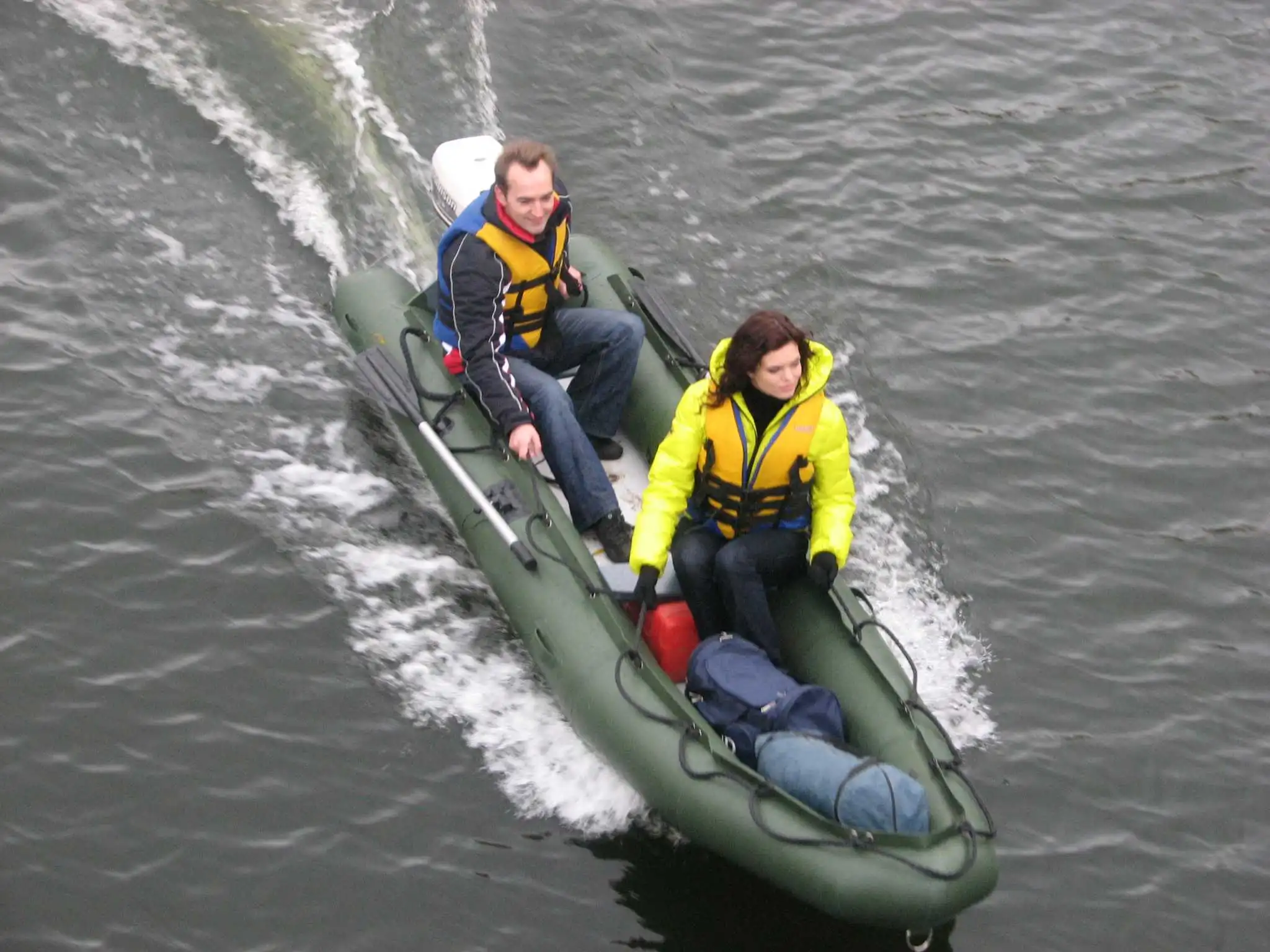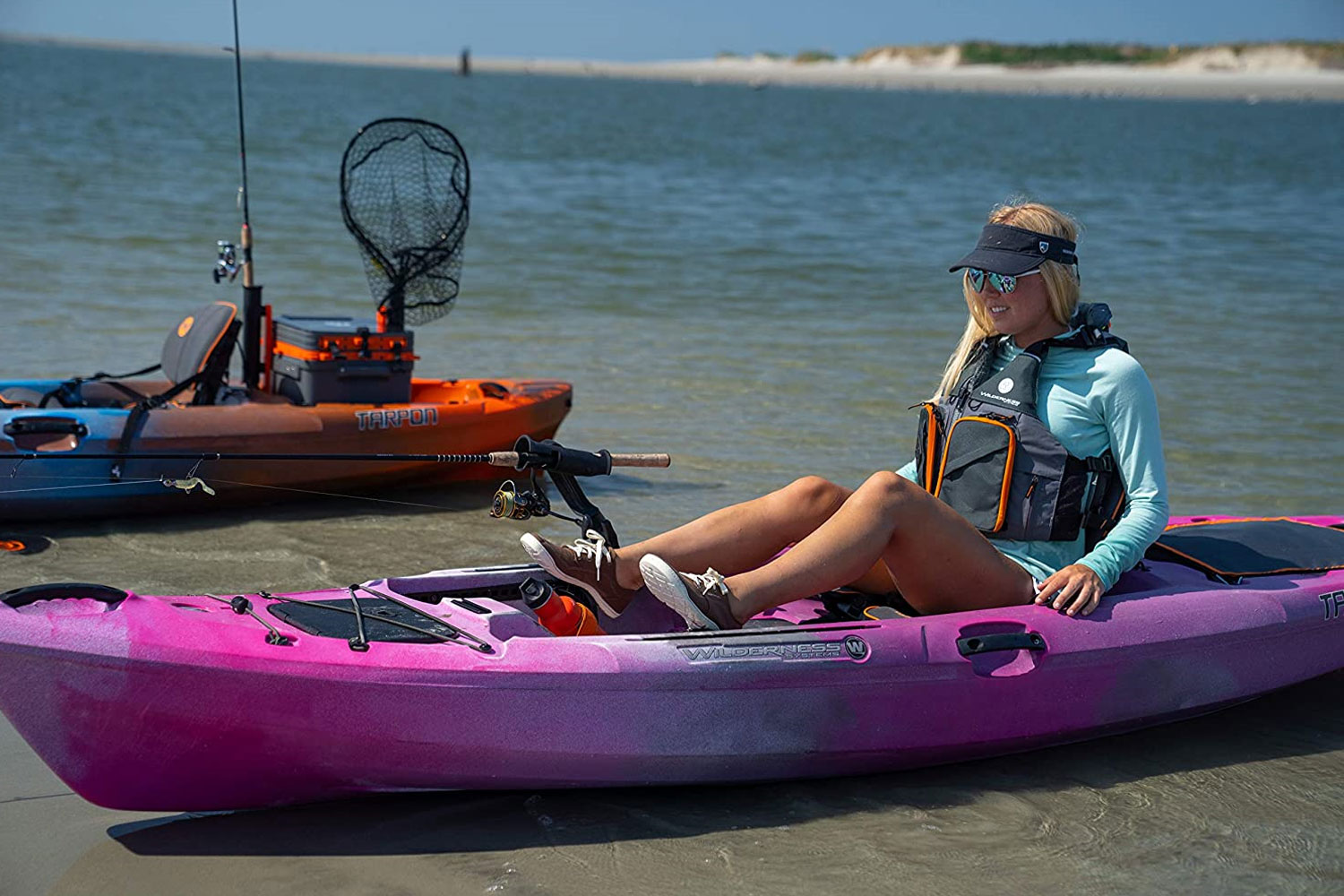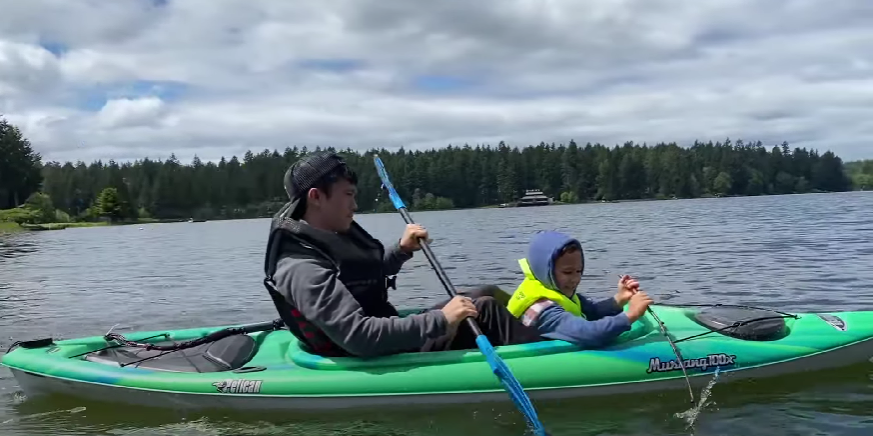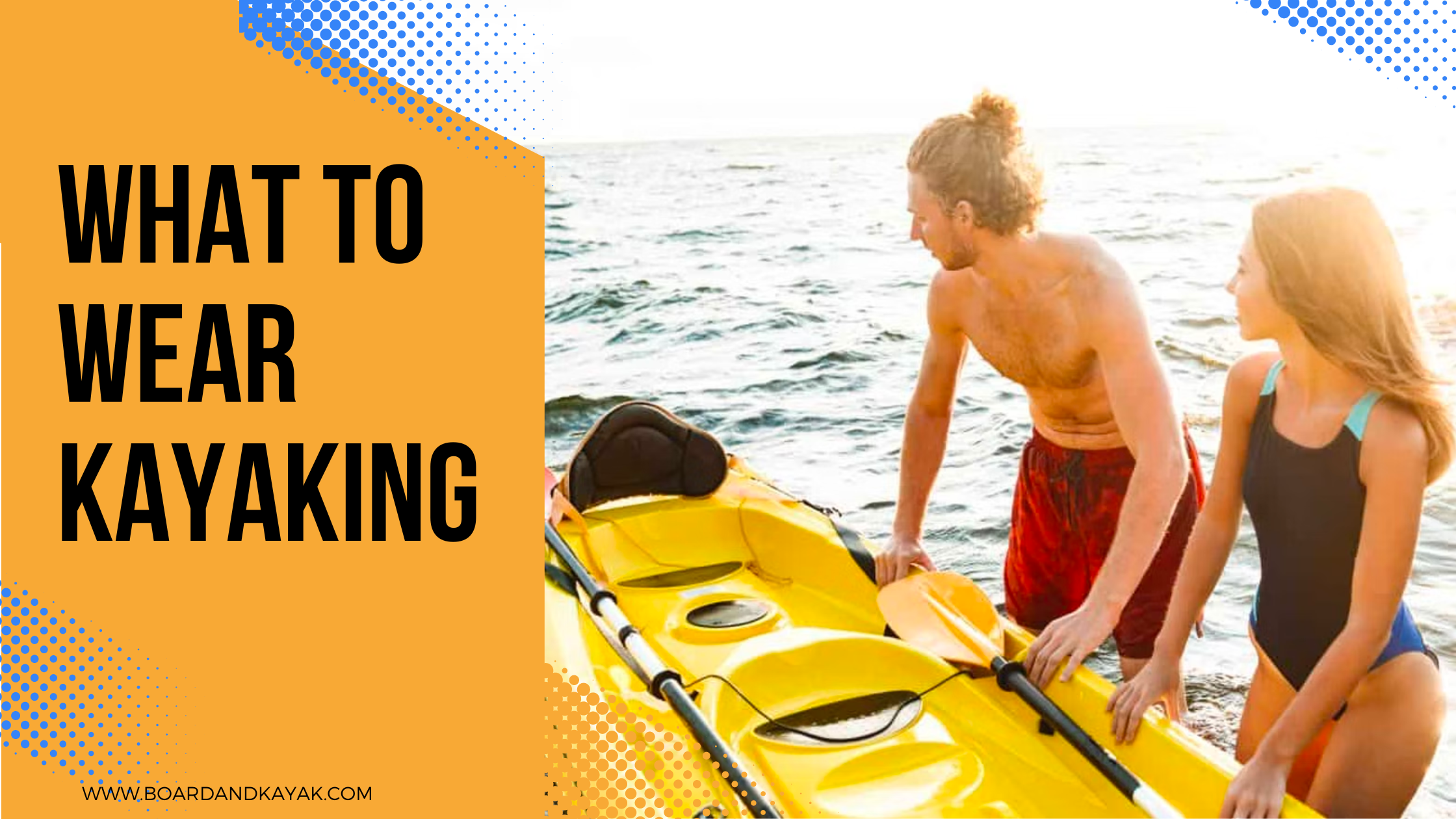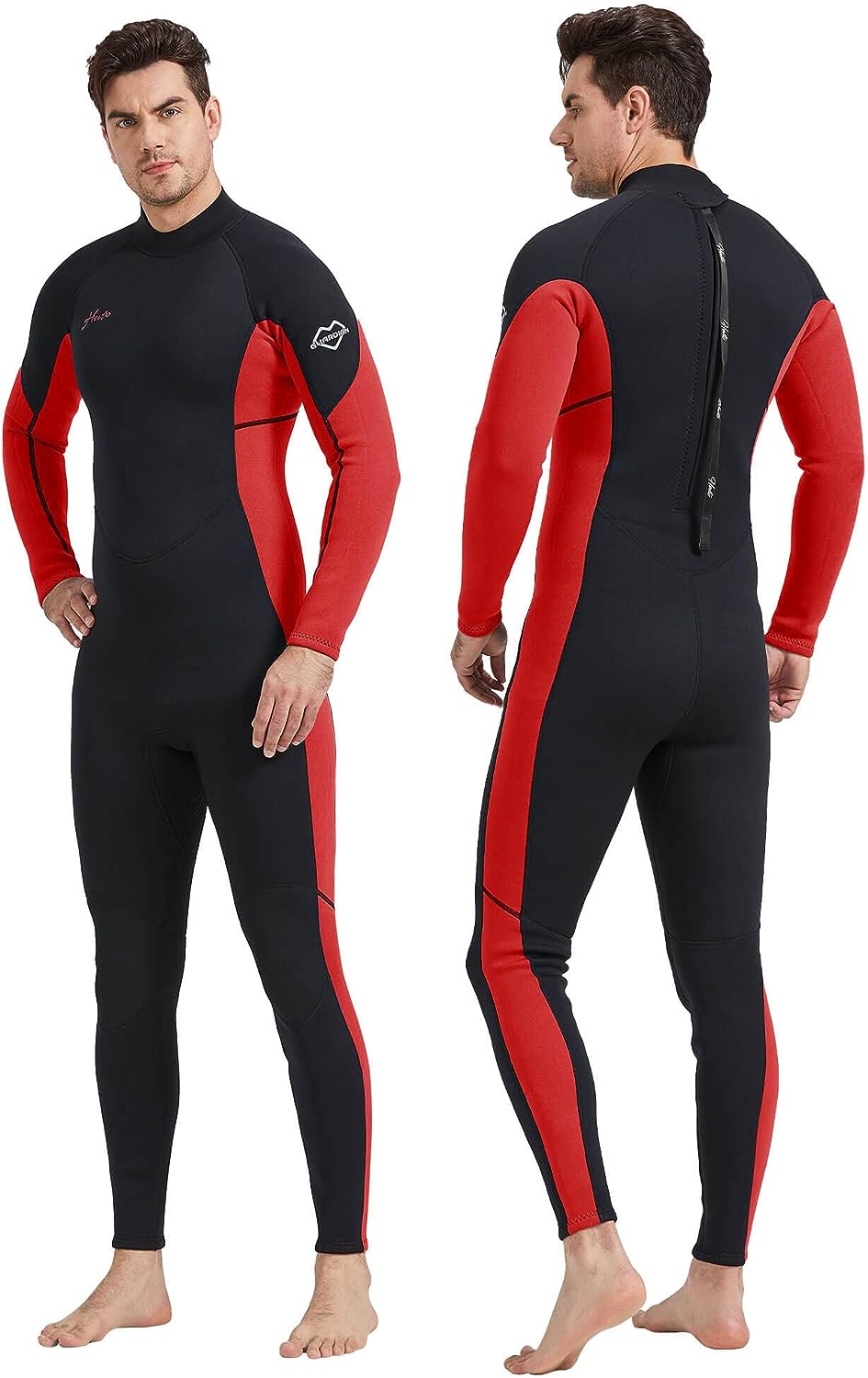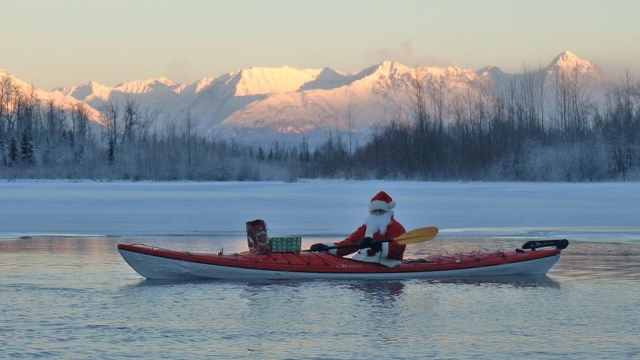
- Alabama
- Alaska
- Arizona
- Arkansas
- California
- Colorado
- Connecticut
- Delaware
- Florida
- Georgia
- Hawaii
- Idaho
- Illinois
- Indiana
- Iowa
- Kansas
- Kentucky
- Louisiana
- Maine
- Maryland
- Massachusetts
- Michigan
- Minnesota
- Mississippi
- Missouri
- Montana
- Nebraska
- Nevada
- New Hampshire
- New Jersey
- New Mexico
- New York
- North Carolina
- North Dakota
- Ohio
- Oklahoma
- Oregon
- Pennsylvania
- Rhode Island
- South Carolina
- South Dakota
- Tennessee
- Texas
- Utah
- Vermont
- Virginia
- Washington
- West Virginia
- Wisconsin
- Wyoming
Kayaking 101: Beginner's Advice And Techniques
Kayaking For Beginners
- 1 - Why You Should Consider Kayaking
- 2 - WHAT EQUIPMENT DO YOU REQUIRE TO GO KAYAKING?
- 3 - How Do I Know What Type Of Kayak I Want To Get?
- 4 - Instructions On How To Get Into And Out Of A Kayak.
- 5 - Getting Out Of A Kayak
- 6 - Kayaking Techniques For Beginners
- 7 - Paddle Blades Identification Guide
- 8 - What Are The Most Common Paddle Strokes?
- 9 - Additional Kayak Techniques And Tips For Beginners
- 10 - The Greatest And Worst Weather Conditions For Kayaking.
- 11 - How Do You Kayak When The Weather Changes Suddenly?
- 12 - Paddling In Windy Weather
- 13 - In A Kayak, How To Right Yourself
- 14 - Is It Easy To Flip A Kayak?
- 15 - Different Environments For Kayaking
- 16 - Reminisces And Safety Tips
- 17 - Important Safety Checklist
- 18 - Every Kayak Trip Requires These Items
- 19 - Critical Requirements For Safe Kayaking
- 20 - Can You Go Kayaking Anywhere?
Are you looking for a fun, exciting, and unique way to enjoy the great outdoors? Well, we've got the perfect suggestion for you - Kayaking! We are a bunch of water fanatics who simply can't get enough of the thrill, tranquility, and pure joy that a day of kayaking brings. If you're on the hunt for a new adventure, kayaking could be just the ticket, and we're here to help you get started with some handy tips and tricks.
Why You Should Consider Kayaking
Trust us, once you've dipped your oars into the world of kayaking, you'll be hooked! While there are plenty of watersports out there that promise a fantastic day off the dock, we firmly believe that kayaking stands out from the crowd, and here's why:
- Kayaking is an amazing workout: If you're after a high-intensity outdoor workout that's gentle on your joints, kayaking is the way to go. This activity can boost your cardiovascular fitness and strengthen your core, arms, back, and shoulders. Not bad for a day of fun, right?
- You can kayak on any body of water: One of the coolest things about kayaking is that it lets you explore the incredible beauty of our world's diverse waters. Your trusty kayak can take you to some breathtaking places, all thanks to the portable equipment that you can launch from any dock, riverfront, or shoreline. Rivers, lakes, oceans, you name it - the world is your oyster!
- It's a blast and a great bonding activity: If you're looking for a way to bond with your pals or family, kayaking is a fantastic choice. Gather your best buds for a thrilling paddle down a fast river, or bring the whole family for a tranquil ride on the lake followed by a lovely picnic. Kayaking can be as chilled out or as exhilarating as you want it to be - it's all up to you!
WHAT EQUIPMENT DO YOU REQUIRE TO GO KAYAKING?
equipment do you require to go kayaking
Absolutely! Before you hit the water, you're going to need a few essentials to ensure you have the best (and safest) kayaking experience. At the top of the list, of course, is a trusty kayak, which you can find at any sports goods store. But depending on the type of kayaking adventure you're planning, there are a few other key items you shouldn't forget:
- Paddle: Think of the paddle as your kayak's best friend - you really can't have one without the other. When choosing a paddle, it's important to consider your torso size and the width of your kayak. Handy sizing charts can help, but as a general rule, if your torso height is more than 28 inches, you'll need a paddle longer than 200 centimeters. If it's less than 28 inches, go for a paddle less than 200 centimeters.
- Lifejacket: A personal floatation device is a must-have for any watersport. Make sure your lifejacket fits snugly - not too tight, not too loose - just comfortably secure.
- Bilge pump: If you're planning a fast-paced paddling adventure, it's a good idea to have a bailer on hand. It can help you quickly remove any water that might get into your kayak.
Remember, kayaking is all about fun, but safety should always be your top priority. Make sure you're equipped with these essentials before you set out on your adventure. And most importantly, have a blast out there on the water!
How Do I Know What Type Of Kayak I Want To Get?
GETTING IN AND OUT OF THE KAYAK
Choosing the right type of kayak can make your adventure even more enjoyable. Here's a friendly guide to help you navigate your choices:
Sit-on-top Kayaks: These are the friendly neighborhood heroes of kayaks. You've probably seen these around, shaped like a recreational kayak but with a key difference - there's no enclosed cockpit. They're super easy to hop in and out of, plus they're wide, giving you fantastic stability. These kayaks are usually the first choice for beginners.
Touring Kayaks: Now, if you're in the mood for a little more adventure, you might want to consider a touring kayak. These are longer and have narrower cockpits. Their sleek build makes them great for more engaging kayaking experiences like embarking on long journeys across serene lakes.
Recreational Kayaks: Picture this, a kayak with a significantly larger cockpit opening than a touring kayak. That's a recreational kayak for you! They're also shorter in length and ideal for a chill paddling session.
Whitewater Kayaks: If you're the kind of thrill-seeker who's up for some vigorous paddling, whitewater kayaking could be for you. There are four main types - playboats, river runners, creek boats, and longboats. Each type has its own perks depending on where you're planning to paddle.
Inflatable Kayaks: Think of these as the inflatable cousins of the sit-on-top kayaks. They're portable, easy to use, and great for a relaxed kayaking experience in calm waters. However, if you're into whitewater kayaking, there are specific inflatable versions for that too!
Kayaks for Kids and Teens: Don't worry, we haven't forgotten about the young adventurers out there. There are smaller kayaks designed specifically for children and teens.
Instructions On How To Get Into And Out Of A Kayak.
Before learning to ride in a kayak, you must know how to enter and exit. Getting in and out of a kayak takes practice, but we're convinced you'll get it. You'll probably join a kayak one of three ways: from the shore, a dock, or deep water. Each choice has pros and disadvantages.
1- The Most Effective Method Of Getting Into A Kayak From The Shore.
Getting into your kayak from the beach is significantly more straightforward and particularly beneficial for people just starting. When paddling along a lakeshore, seashore, or river shoreline, the ideal place to start is by moving the kayak as near as possible to the water's edge. If you want to float on top of the water, you may sit in your kayak and use your arms to propel yourself into it until you reach the surface. Move the kayak into shallow water and get into it if you're worried about scratching your hull on the ground. Remember that the ease with which you can get into your kayak will be affected by the beach from where you are accessing it. For example, you may be launching your kayak from the coastline of a river, lake, or beach.
The technique of getting into your kayak is the same no matter where you are on the terrain:
- Set up the kayak so that it is parallel to the shoreline.
- Place your paddle at a 90-degree angle behind the seat to help you maintain your equilibrium. Experts say you should spend half of your paddle time on the beach. While paddling, the other half of your body should lie over the boat's hull.
- While sitting on the paddle section closest to the shore, place your feet inside the boat and shut your eyes.
- To maintain control of the kayak, slide it as swiftly down the paddle and into it while holding onto the paddle below and near your body. When you make this move, the paddle and the boat will bear the brunt of your weight.
- Take a seat in the chair. Make careful to maintain your weight as low as possible and enter the arena as gracefully as possible. Remember to keep your composure and concentration on maintaining your balance.
- When you're ready, lay your paddle horizontally across your lap and use your hands to propel yourself away from the coast. If you need to, you may push into the coastline with your paddle, offering you an extra dose of confidence.
2- An Example Of Getting Into A Kayak From A Dock
Docks are handy locations to get into your kayak, but it requires skill to do well. To assist you, follow these steps:
- As you lower your kayak from the dock to the water's surface, keep the kayak parallel to the pier.
- Adjust the position of your paddle so it is within easy grasping distance of the seat. Additionally, by putting either end of the paddle on the kayak or the dock, you may prevent your kayak from altering places.
- Please note that the higher you go up the mountain, the more difficult it will be to get into your kayak. As a result, you'll want to sit at the lowest area of the dock, as close to the kayak as possible, to avoid getting wet. Starting from seated on the dock's edge, drop your feet into the kayak first, then your arms. Then, lower yourself into the seat with your body swiftly positioned toward the front of the kayak.
Are you looking for a way to make this even easier? Suppose you have a docking system with a connected launch. In that case, this will make getting in and out of your kayak, launching your kayak, and redocking much more stable and substantially simpler for kayakers of any ability level.
3- Getting Into A Kayak In Deep Water
You may need to get into your kayak from deeper water on occasion. This is perhaps the most demanding kayak entry option, but it is achievable with patience. The most crucial thing is to maintain your kayak stable between moves. Here's how to go about it:
- First, lay one hand on the kayak's side closest to you and put your other hand on the opposite side; your arm will be stretched over the seat opening.
- Pull yourself onto your kayak so your belly button is above the seat. Your legs will still be roughly half in the water.
- Next, swivel around to get your bottom on the seat. Your legs will still hang in the water, but you should have most of your body in the kayak.
- Make sure the kayak is steady, draw your feet, and position them before you.
Getting Out Of A Kayak
The directions for getting out of a kayak are simple to remember—follow the procedures in reverse. When departing on the beach, paddle your kayak into shallow water or as near the ground as possible. Swing your legs out of the kayak, establish your footing, and stand up. When exiting the kayak on a dock, turn your body to face the port and lift yourself out of the kayak.
Thankfully, today's docking systems can readily accommodate kayakers of various abilities and skill levels. Our enthusiasm for spending time on the water has inspired us to build floating launch systems for your kayak or canoes to make getting in and out of the water a breeze.
Kayaking Techniques For Beginners
It's time to learn about paddling methods after mastering getting in and out of the kayak. The first step is to choose a paddle that is the correct length for you. Our guide to picking a kayak includes thorough insights into selecting the best paddle length.
As with any sport, the appropriate methods can keep you safe and help you avoid damage. The same may be said about learning how to paddle a kayak properly. For obtaining something, there is a decent technique and a flawed process. Before stepping into the water, all novices should first learn to wield the paddle. The portion of the paddle you grasp is called the shaft. The ideal method for holding a paddle is to position your hands somewhat further than shoulder width apart on the shaft. Often, one error that beginning kayakers make is gripping the paddle wrongly. The side of the blade that curves in should always be facing you. Cut the paddle's edge straight into the water while keeping your grip on the shaft loose and your knuckles facing up. Maintaining this form will put more force into your paddle without expending more power.
Sit in your kayak with your legs in front of you and your back straight. Make sure that you don't feel bad. Bend your knees slightly and rest them on the side of the kayak.
At the front of your kayak, a set of footpegs may be added. Keep your knees slightly bent and your feet on the footpegs. You may need to adjust your footpegs if your knees are too near your body or your legs are too straight.
To paddle forward, utilize your core to twist your body while leaning forward and putting the paddle into the water near your feet. Then drag the blade towards your seat and lift it out of the water. It's crucial to stroke from your feet to your heart—paddle like this on both sides.
If you wish to halt your kayak, place your paddle in the water and hold it there, and it will drag against the water, and your kayak will slow down and finally halt.
Assume you want to turn your kayak to the left and paddle on your right side. If you wish to turn your kayak right, paddle just on the left side.
Paddle Blades Identification Guide
Paddle blades are available in various forms and sizes. You can learn with any kind, but you must know which one you have and how to modify it if your paddle allows it, which most do. Here are some blade words to be familiar with:
- Matched: Because the blades are parallel, matched edges are easy to master.
- Feathered: The blades are at an angle, reducing wind resistance on edge, not in the water. The swords can be modified to match if you're starting. Locate a push-button mechanism in the shaft's midsection and spin it until the blades are parallel.
- Concave: Most blades are somewhat bent or indented. This design lets you transport more water at once, allowing you to go faster.
- Asymmetrical: Your blade is asymmetrical if one side is shorter. As the paddle goes through the water, its curvature helps maintain the track straight rather than turning.
- Symmetrical: With symmetrical blades, both sides are the same length, giving it a distinctive oval form.
While any paddle will get the job done in a kayak, knowing the various blade shapes and styles can help you choose the right paddle for your Kayaking, whether it's lake paddling, kayak surfing, or anything in between.
What Are The Most Common Paddle Strokes?
You may now learn fundamental paddling strokes with the paddle in your hand. Forward Stroke, backward Stroke, sweep strokes, and draw strokes are the four basic kayak paddling methods you should be familiar with. These strokes allow you to turn around and travel ahead, backward, or sideways in your kayak.
1- Forward Stroke
This fundamental Stroke propels you ahead in your kayak.
- Place one end of the paddle towards your toes in the water.
- Pull the blade back towards your hip to move the kayak ahead.
- Rotate your body forward while drawing the paddle blade out of the water and plunging the opposing knife into the water.
2- Reverse Stroke
This Stroke reverses the direction of your kayak.
- Between your torso and the stern, submerge one end of the paddle in the water (the back of the kayak).
- Look behind you as you move the paddle toward your toes.
- Allow your body to return to a square sitting posture before repeating the technique on the other side.
3- Sweep Strokes
To turn your kayak, use sweep strokes. To turn forward with a sweep stroke:
- Toes against the bow, or front, of the kayak, place the end of the paddle in the water.
- Return the paddle to the stern of the kayak in a half-moon arc.
- Using the paddle, turn your body.
To turn backward with a sweep stroke:
- Place the paddle's end in the water against the kayak's stern.
- Draw the paddle forward in a half-moon arc to the kayak's bow.
- With the paddle, rotate your body.
4- Draw a Stroke
To shift your kayak sideways, use the draw stroke.
- Put your paddle blade in the water in the direction you wish to go and spin your body.
- Your hands should be above the water with the paddle far enough away from the kayak.
- Pull your kayak closer to the blade.
Additional Kayak Techniques And Tips For Beginners
If this is your first time kayaking, or if you're still new to the sport and going out on the water by yourself, we recommend following these guidelines:
- Choose a quiet lake or pond where you can see the opposing coastline. Water bodies with little or no powerboat traffic are preferable since they reduce the number of artificial waves you'll encounter.
- Launch your kayak from a land-based pier that is visible to onlookers. If you're kayaking alone or with a party that stays on the shore, your kayak will be visible if you need assistance or emergency assistance.
- Make your first few travel quick and safe. To make your environmental problems as predictable as possible, choose a clear sunny day with no rain or severe winds expected. Also, be aware of your limitations and underestimate the length of time you can kayak safely before becoming exhausted. You don't want to overdo your first kayaking outings and make it tough to paddle back to shore, just as you don't want to overdo other exercises. Limit your initial excursion to an hour, then go as long as you like.
The Greatest And Worst Weather Conditions For Kayaking.
Kayaking circumstances are ideal when the weather is warm and dry, the water is tranquil, and safety measures are taken. However, it would be best if you considered the forecast and other quickly-changing weather signs. While a spontaneous kayaking excursion may be enjoyable, you don't want to be caught in terrible weather or situations above your ability level. As a result, you'll still need to conduct some planning.
Here are some suggestions to make your trip more enjoyable:
- Plan a journey to a place where the circumstances match your abilities.
- Before you go, double-check the weather prediction.
- Wearing life jackets and other safety equipment or a wetsuit
- Using the buddy system and having a backup plan in the event of an emergency
- Investigating possible risks, such as under rocks or currents that are stronger than they seem
Some of the circumstances you'll want to avoid as a beginning include:
- Because fog limits vision and muffles hearing, it is dangerous.
- Waterways have a high volume of boat traffic.
- Since you fall into it, Polluted water may unintentionally expose you to hazardous microorganisms.
- Whether it's less than ideal or unstable, you don't want to get trapped in a dangerous storm in a kayak.
How Do You Kayak When The Weather Changes Suddenly?
The weather might vary quickly depending on where you're kayaking. Even if you plan your vacation for a beautiful day, you should know what to expect while kayaking in inclement weather. You may not realize how challenging Kayaking in a thunderstorm is until you're stranded in one, but a few novice kayaking skills and methods may help you escape danger and return to shore safely.
Paddling In Windy Weather
Any quantity of wind, from a bit of breeze to a strong gust, can affect your kayak somehow. This is very typical, and you can quickly compensate if you can, paddle with the wind rather than against it to save energy. You may paddle harder, utilize a rudder, or add Stroke to your downwind side to make proper wind adjustments.
Don't resist it if you lose control of your kayak. Consider driving along the road and losing power due to ice, gravel, or other treacherous circumstances. Attempting to recover possession of the car too quickly may force you to overcorrect, worsening the problem. Instead, keep as much control as possible of the vehicle and travel in the vehicle's direction. Kayaking is the same way. If you are spinning, move with the kayak and make the necessary adjustments.
In A Kayak, How To Right Yourself
There's also the possibility that your kayak may submerge you. In this situation, being balanced in the kayak and wearing a life jacket would be beneficial. If you turn over without a life jacket, be calm and grasp the kayak and, if applicable, the life vest connected to the watercraft.
If you tip in calm water, hold both sides of the cockpit and turn the kayak over. Suppose you can hop back in. Grab your kayak and swim back to land or shallow water if you can't accomplish it. Suppose your kayak flips over while in a current. Just use one arm to support it. Face upward to ensure that you can breathe. Backstroke to the beach or shallower water, keeping your body parallel to the water's surface.
Is It Easy To Flip A Kayak?
Said flipping a kayak is more complicated than it seems. The majority of models are designed to be incredibly stable. It's also hard to believe, yet there may be times when you want to overturn a kayak intentionally. Many experienced paddlers encourage learning to flip a kayak because it increases confidence in the water, especially in challenging settings such as the open ocean.
It's preferable to learn how to flip a righted kayak with the help of an experienced instructor. Almost sure you'll know two different types of rolls. The sweep (or screw) roll is one, while the other is the vertical (or C to C) roll. Though they vary significantly when effectively executed, both sorts of rolls culminate in the same outcome: you sitting upright in your kayak, paddling further — although a little wetter than when you began.
Different Environments For Kayaking
Now that you've mastered a few kayaking tips and tricks, it's time to master some kayaking abilities and methods you can apply to various water bodies. Each paddling area has its characteristics that will influence how you paddle. A flowing river, for example, may immediately increase your speed, but a stagnant lake may need you to use more energy to go faster.
You may kayak in any body of water you like, and it's a good idea to map out a route ahead of time. Keep an eye out for locations along the coastline where you won't be able to react quickly in an emergency if you're kayaking on a lake or pond. If you're kayaking down a river or stream, find a path where the water is usually calm. It's better to avoid locations that can become more difficult if you paddle too far, particularly if you're new to Kayaking.
It's also a good idea to mark areas along your journey where you can stop for a break, such as bays or accessible shorelines. Bring a nautical map or a compass if you get off track. Though GPS and other electronic navigational gadgets are essential, a paper map will be a reliable backup if they fail.
When kayaking in fresh and saltwater, you should be mindful of the many species you may encounter. Sharks and jellyfish may be found in the oceans, inlets, and bays. Where you're kayaking, rivers, streams, or lakes may include snakes, alligators, or other potentially deadly creatures on the shoreline. Discover what sorts of animals you could meet before venturing into the water and how you can safely share the water with them.
After you've mastered beginning Kayaking, you may wish to further your skills and try whitewater kayaking. We can see why: whitewater kayaking is a fantastic activity that lets you see nature uniquely. If you want to accept this challenge, here is some whitewater kayaking advice to keep in mind:
- Learn to roll your kayak: Your first few whitewater kayaking outings will likely feature capsizing. You'll be safer if you know how to proceed and recover, and learning to low brace can help you avoid rolling in the first place.
- Make sure you know how to swim in whitewater properly: Whitewater rapids are hazardous, and failing to learn how to swim through them properly might result in harm. If you get out of your kayak, you'll need to learn how to swim to safety.
- Learn how to escape hydraulic and traverse an eddy line: A hydraulic is a hole in the river that might trap you, and an eddy line is a diving line between currents. Knowing how to avoid these dangers can help you stay safe.
Reminisces And Safety Tips
SAFETY TIPS AND REMINDERS
Paddling out to the middle of your favorite lake and enjoying the peaceful tranquility of nature may be a pleasant experience. Kayaking can also be an exhilarating experience as you put your abilities to the test on a river rife with whitewater rapids. Even though all hobbies provide entirely different levels of enjoyment, all types of Kayaking are dangerous.
Like boating, surfing, and other watersports, Kayaking may jeopardize a kayaker's health and safety, particularly if the person fails proper safety procedures. You may still have a terrific time with your kayak despite the hazards. Making and sticking to a safety checklist will help you have a safe and enjoyable day on the lake.
Important Safety Checklist
Ask yourself these simple questions before you go out on the water:
- Can everyone in your kayaking group swim independently?
- Have you made a float plan with the names of people who will be kayaking and your planned route and informed other friends or family members about the trip?
- Are you ready for unexpected weather changes or poor light?
- Do you have a dependable method of requesting help in the case of an emergency?
Every Kayak Trip Requires These Items
Aside from the kayak and paddle, there are a few items you should always have with you:
- Sunscreen
- Paddle spare
- Dress appropriately.
- Hat or helmet?
- Signaling device or whistle
- Essentials in a drybag
- Snacks and water
- appropriate footwear
- Self-rescue systems
- Compass or maps
- Knife for rivers
Critical Requirements For Safe Kayaking
To guarantee a safe voyage, remember the following rules:
- When out on the open ocean, you should never paddle alone.
- Wear a helmet and flotation device: an enjoyable ride is safe.
- Kayak sober: While kayaking, never drinks or takes drugs.
- Tell the truth about your kayaking skills: Only kayak in seas.
- Always verify the weather forecast and water conditions before kayaking in poor or harsh conditions. If the weather forecast appears terrible, postpone your journey.
While care should always be used while participating in any watersport or physical activity, Kayaking can be a safe and enjoyable experience if done correctly. Always bring the needed items, be aware of the weather and water conditions, and behave appropriately. Always keep in mind that safe Kayaking is smart Kayaking.
Can You Go Kayaking Anywhere?
With a big enough body of water, you can kayak almost everywhere. Unlike other watercraft, a kayak may be strapped to the top of your vehicle and taken on a trip. There are peaceful lakes, river rapids, quiet streams, and beautiful oceans to explore. One of the most tempting parts of Kayaking is the chance to go on a fascinating voyage close and distant across the sea. Here are several locations where you should remember to carry your paddle:
- North America: Lake Tahoe, California, and Nevada: Lake Tahoe is one of the world's oldest lakes and one of America's most iconic bodies of water. With over two dozen beaches, you'll have many opportunities to kayak North America's biggest alpine lake.
- Ecuador, Galapagos Islands, South America: Explore the natural habitats of some of the world's most amazing animals. This stretch of Pacific islands offers a once-in-a-lifetime chance to see what sparked Darwin's theory of evolution.
- Southern French Alps, France, Europe: Prepare for an exciting whitewater kayaking adventure on one of the numerous rivers that run through the French Alps. The Bonne, Ubaye, and Durance provide challenging rides for those skilled enough to manage their waters.
- Moreton Bay, Queensland, Australia: Kayakers may pick from various water types in this coastal area, including rivers, creeks, inlets, and lakes. The Pumicestone Passage offers island hopping, relaxation in the broad expanse of Lake Kurwongbah, and animal encounters near Hays Inlet.
- Take an exciting paddle around one of Vietnam's most famous tourist sites, Ha Long Bay. Float through grottos and islands while taking in the tranquil scenery.
- Lake Malawi National Park in Malawi, Africa, is a UNESCO World Heritage Site recognized for its pure waters and stunning scenery. Take a safari unlike any other as you paddle by animals found nowhere else on the planet.
There are many beautiful areas to kayak, including rivers, lakes, and seas right in your backyard, from the shimmering Caribbean waters to the Adriatic's mesmerizing waves. Once you start kayaking, the possibilities for adventure are endless.

